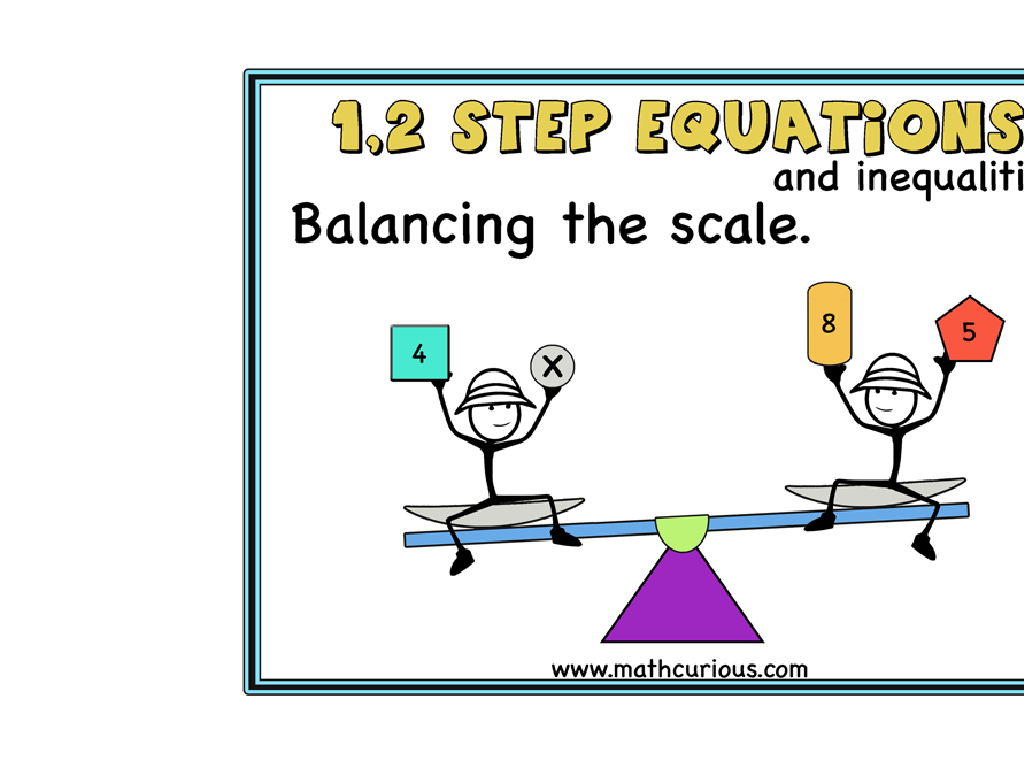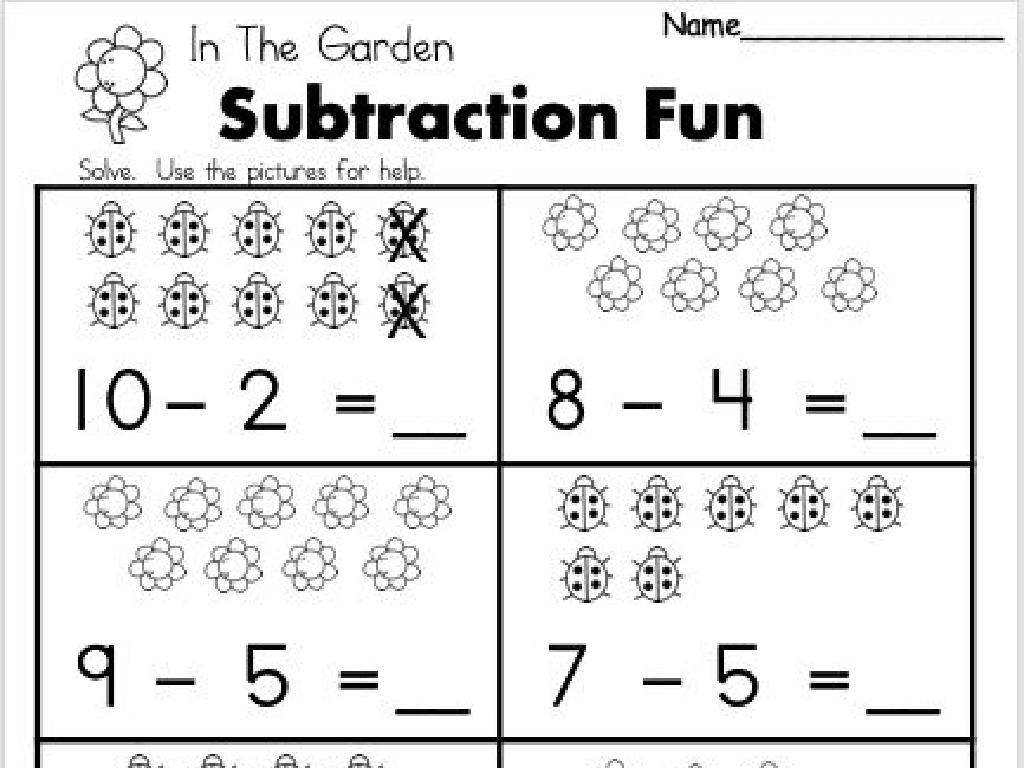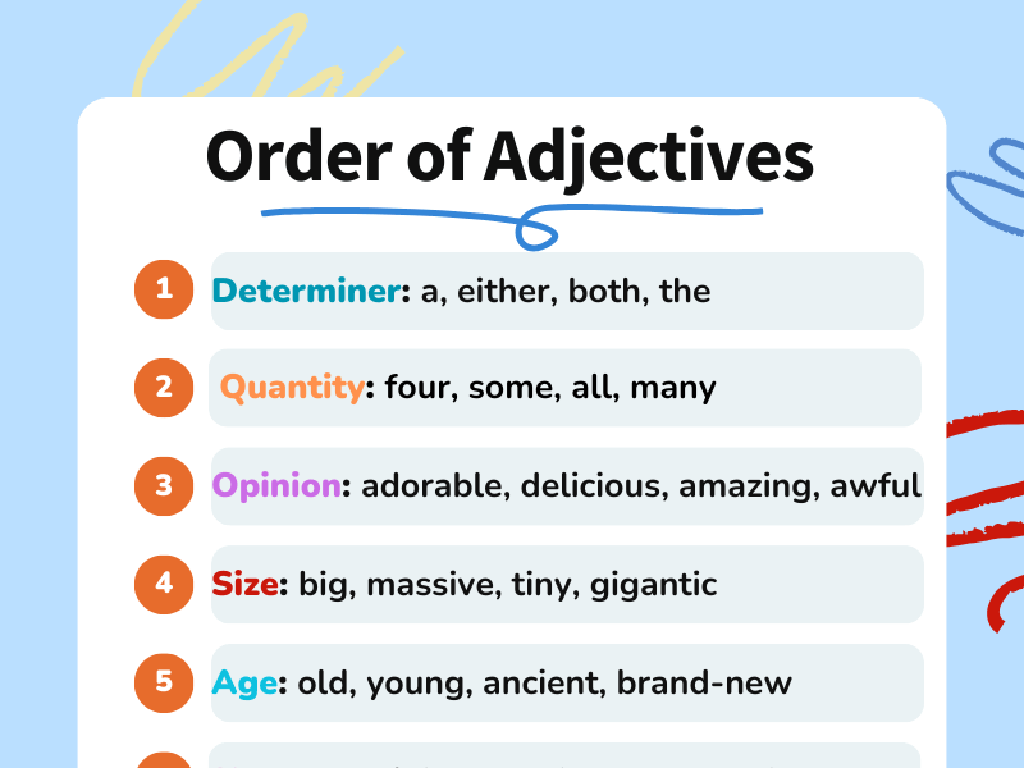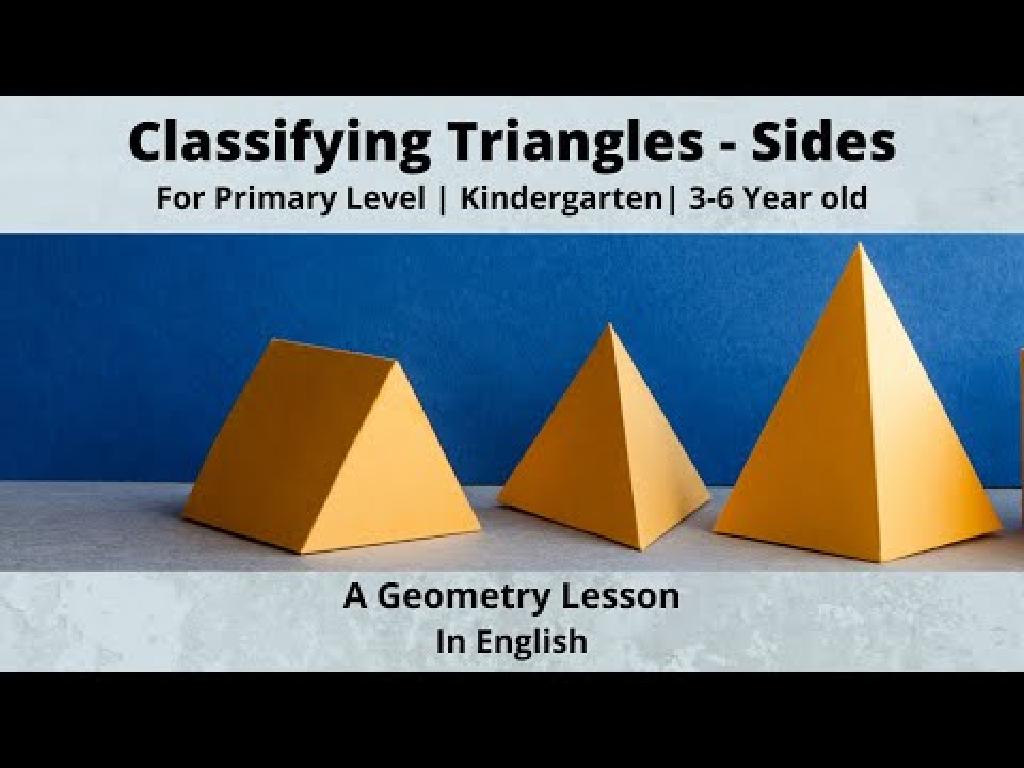Identify The Best Design Solution To Prevent Hurricane Damage
Subject: Science
Grade: Fifth grade
Topic: Engineering Practices
Please LOG IN to download the presentation. Access is available to registered users only.
View More Content
Engineering Against Hurricanes
– What is Engineering?
– Engineering is solving problems using science and math.
– Engineering for Hurricane Safety
– How can we design buildings to resist hurricanes?
– Identifying Top Design Solutions
– Explore barriers, sturdy roofs, and elevated structures.
– Learning Objective: Mitigate Impact
|
This slide introduces students to the concept of engineering and its significance in creating solutions for real-world problems, such as hurricane damage prevention. Begin by explaining what engineering is and how it combines science and math to solve problems. Then, focus on how engineers design buildings and structures to withstand the forces of hurricanes. Discuss various design solutions like storm surge barriers, wind-resistant roofing, and elevated buildings to prevent flood damage. The learning objective is for students to understand and identify effective engineering solutions that can reduce the impact of hurricanes. Encourage students to think critically about how these solutions work and why they are important.
Understanding Hurricanes
– What is a Hurricane?
– A powerful storm with high winds and heavy rain.
– Formation of Hurricanes
– Warm ocean water and air combine to create these storms.
– Destructive Elements
– Wind, rain, and storm surges lead to destruction.
– Mitigating Hurricane Damage
|
Begin the lesson by defining a hurricane as a type of tropical cyclone with sustained winds of at least 74 miles per hour. Explain the science behind hurricane formation, including the role of warm ocean waters and moist air. Discuss why hurricanes are so destructive, focusing on the impact of high winds, heavy rainfall, and storm surges that can lead to flooding and structural damage. Emphasize the importance of engineering solutions in mitigating hurricane damage, such as designing buildings to withstand high winds and implementing effective evacuation plans. Use diagrams to illustrate how hurricanes form and maps to show areas typically affected by these storms. Encourage students to ask questions and think about how communities can better protect themselves from the effects of hurricanes.
Engineering Against Hurricanes
– Historical hurricane impacts
– Look at Hurricane Katrina and its effects as an example.
– Community and environmental effects
– Homes, schools, and ecosystems can be damaged or destroyed.
– Engineering roles in disaster management
– Engineers create buildings and systems to withstand hurricanes.
– Designing solutions for prevention
|
This slide aims to educate students on the devastating impact hurricanes can have on communities and the environment, using historical events like Hurricane Katrina to illustrate the magnitude of damage. It also introduces the critical role of engineering in disaster prevention and mitigation. Discuss how engineers design buildings, levees, and other structures to resist hurricane damage. Encourage students to think about how different designs can protect homes and habitats. The goal is to foster an understanding of the importance of engineering in safeguarding against natural disasters and to inspire interest in innovative solutions for hurricane damage prevention.
Engineering Against Hurricanes
– What are engineering solutions?
– Examples: Buildings, barriers, defenses
– Stronger materials, elevated structures, sea walls
– Comparing solution effectiveness
– Which designs withstand hurricanes best?
– How do solutions protect us?
– Solutions reduce damage and save lives
|
This slide introduces students to the concept of engineering solutions aimed at mitigating hurricane damage. Start by explaining what engineering solutions are and how they can be applied to real-world problems like hurricanes. Provide examples such as the use of stronger building materials, elevated structures to avoid floodwaters, and coastal defenses like sea walls. Discuss with the class how these solutions can be compared in terms of effectiveness, considering factors such as cost, feasibility, and the level of protection they offer. Emphasize the importance of these solutions in protecting communities and saving lives during hurricane events. Encourage students to think critically about the advantages and limitations of each solution.
Designing to Withstand Hurricanes
– Key features in resistant buildings
– Reinforced structures, secure roofs, elevated designs
– Materials for durability and safety
– Use of sturdy materials like concrete, steel, impact-resistant glass
– Construction techniques that protect
– Building methods like deep foundations, tight seals on openings
– Case study of successful structures
– Examples: Dome homes in Florida, Elevated houses on coastlines
|
This slide aims to educate fifth-grade students on the importance of engineering practices in designing buildings that can withstand hurricanes. Start by discussing the key features that make buildings resistant to hurricane damage, such as reinforced walls and secure roofs. Explain the significance of using durable materials like concrete and steel, and the role of construction techniques in enhancing the safety of structures. Highlight real-world examples of hurricane-resistant structures, such as the dome homes in Florida, which have successfully withstood hurricanes due to their unique shape and construction. Encourage students to think critically about how these designs can be applied in their own communities to increase safety during natural disasters.
Group Activity: Engineering Hurricane-Resistant Structures
– Form small brainstorming groups
– Design a model structure
– Create a miniature version of a building that can withstand hurricane forces.
– Consider cost and materials
– Balance the budget with the need for strong, durable materials.
– Evaluate environmental impact
– How will your design affect nature and the surrounding area?
|
This group activity is aimed at engaging students in collaborative problem-solving to design structures that can resist hurricane damage. Divide the class into small groups to foster teamwork. Each group will brainstorm and then draw or build a model of their ideal hurricane-resistant structure. Encourage them to think critically about the cost-effectiveness of their designs, the materials they would use, and how their structures would impact the environment. Provide a variety of materials for model-making. Possible activities include researching real-life hurricane-resistant buildings, discussing the importance of flexible yet strong materials, and considering the long-term environmental effects of construction. This hands-on activity will help students understand the complexities of engineering in the real world.
Presenting Our Hurricane Solutions
– Groups present their designs
– Discuss pros and cons
– Consider effectiveness, cost, materials
– Class votes on top solution
– Which design can best withstand a hurricane?
– Reflect on the design process
– What did we learn from each design?
|
This slide is for a class activity where students will engage in presenting their engineered solutions to prevent hurricane damage. Each group will take turns to explain their design, the materials they would use, and how their solution can minimize damage during a hurricane. After presentations, the class will discuss the advantages and disadvantages of each design, considering factors such as cost, materials, and effectiveness. The teacher should facilitate the discussion to ensure that every voice is heard and that the conversation remains constructive. Finally, the class will vote on the solution they believe is the most effective. The teacher should prepare to guide the voting process and help students reflect on what they have learned from each other’s designs. The teacher’s notes should include guidelines for the presentation, discussion, and voting process, as well as prompts to help students think critically about the designs.
Conclusion: Engineering & Hurricane Safety
– Recap: Engineering against hurricanes
– The role of engineering in disasters
– Engineers design buildings and structures to withstand strong winds and flooding.
– Homework: Reflect on your learning
– Write about the engineering practices you learned and their importance.
– Think how to apply these ideas
– Consider how we can use these practices to protect our homes and communities.
|
As we wrap up our lesson on engineering practices for hurricane damage prevention, it’s important for students to reflect on what they’ve learned. Emphasize the critical role that engineering plays in safeguarding against natural disasters. For homework, students should write a reflection to reinforce their understanding and consider practical applications. This exercise will help them connect classroom knowledge with real-world scenarios and recognize the impact of engineering solutions on community safety. Encourage them to think creatively about how they can apply these concepts to improve preparedness in their own lives.






